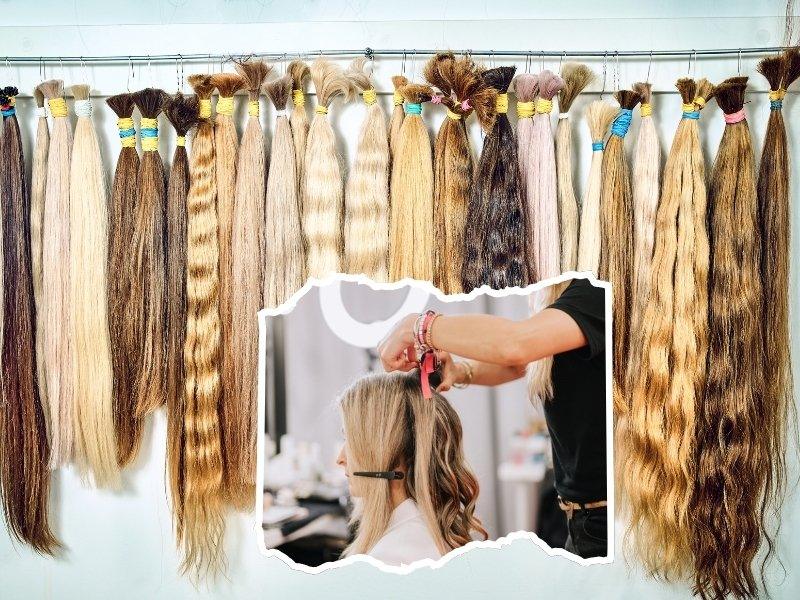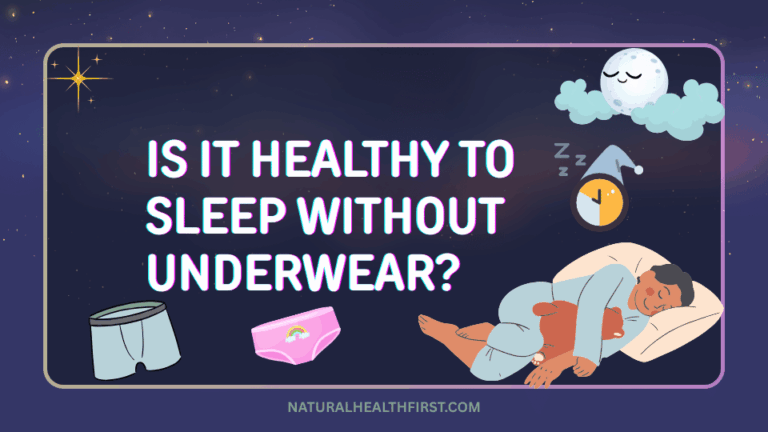Hair extensions have become a game-changer for anyone looking to add length, volume, or color to their natural hair. Whether you’re dealing with thinning hair, want to experiment with a new look, or simply desire longer locks without waiting years to grow them out, hair extensions offer an instant transformation.
Understanding the costs and options available can help you make an informed decision that fits both your budget and lifestyle. Let’s dive deep into everything you need to know about hair extensions, from pricing to application methods.
Why Women Choose Hair Extensions
Before diving into pricing, let’s understand why hair extensions are so popular:
- Instant Length – If your hair won’t grow past your shoulders, extensions give you instant inches.
- Added Volume – Perfect for women with fine or thinning hair.
- Experimentation – Try colors, highlights, or balayage without chemical damage.
- Special Occasions – Weddings, events, or photoshoots.
- Confidence Boost – Fuller hair instantly transforms how you look and feel.
How Do Hair Extensions Work?
When you ask, “How do hair extensions work?”, the answer depends on the method used. Essentially, extensions are added to your natural hair through various techniques:
- Clip-In Extensions – Temporary, attached with small clips.
- Tape-In Extensions – Applied with adhesive strips.
- Sew-In (Weave) Extensions – Braided hair with extensions sewn in.
- Keratin Bond/Fusion Extensions – Strands fused with heat or glue.
- Micro-Link Extensions – Attached with tiny metal beads.
- Halo Extensions – Worn like a headband, no installation required.
Each type has a different price range, lifespan, and maintenance routine.
Also Read: Can You Eat Beef Jerky While Pregnant?

How Much Are Hair Extensions? Breaking Down the Costs
The cost of hair extensions varies dramatically based on several factors. You might spend anywhere from $20 for clip-in synthetic extensions to over $3,000 for premium human hair extensions applied by a professional stylist.
| Type of Hair Extensions | Average Cost (Hair Only) | Professional Installation | Total Price Range |
|---|---|---|---|
| Clip-In Extensions | $100 – $300 | None (DIY) | $100 – $300 |
| Tape-In Extensions | $200 – $500 | $200 – $600 | $400 – $1,100 |
| Sew-In/Weave Extensions | $100 – $300 | $200 – $500 | $300 – $800 |
| Keratin/Fusion Extensions | $500 – $1,500 | $300 – $1,000 | $800 – $2,500 |
| Micro-Link Extensions | $400 – $1,000 | $200 – $800 | $600 – $1,800 |
| Halo/Wire Extensions | $200 – $500 | None (DIY) | $200 – $500 |
Budget-Friendly Options ($20-$150)
Synthetic clip-in extensions represent the most affordable entry point into the world of hair extensions. These temporary options work well for special occasions or experimenting with different looks. Drugstore brands offer basic sets starting around $20-40, while higher-quality synthetic extensions from beauty supply stores range from $50-150.
Halo extensions, which sit on your head like a headband with an invisible wire, typically cost between $80-200 for synthetic versions. These provide more coverage than basic clip-ins and blend better with natural hair.
Mid-Range Investment ($150-$800)
Human hair clip-in extensions fall into this category, offering better quality and more natural appearance than synthetic alternatives. Professional-grade clip-ins from reputable brands cost between $150-500, depending on length, thickness, and hair quality.
Tape-in extensions professionally applied usually range from $200-600, including the cost of hair and application. These semi-permanent options last 6-8 weeks before requiring maintenance.
Premium Professional Options ($800-$3,000+)
High-end salon applications like fusion bonds, micro-links, and sew-in weaves represent the top tier of hair extension investments. These methods typically cost $800-2,000 for the initial application, with some luxury salons charging up to $3,000 for premium human hair and expert application.
The higher cost reflects the time-intensive application process, quality of hair used, and longevity of results. These extensions can last 3-6 months with proper care and maintenance.
How Much Do Hair Extensions Cost Based on Hair Type?
The type of hair used significantly impacts the overall cost of your extensions. Understanding these differences helps you choose the best option for your budget and needs.
Synthetic Hair Extensions
Synthetic extensions offer the most budget-friendly option, typically costing $20-200 depending on the brand and application method. Modern synthetic fibers have improved dramatically, with heat-friendly options allowing for styling with lower temperatures.
However, synthetic hair has limitations. It doesn’t move or feel like natural hair and can appear shiny or artificial under certain lighting. The lifespan is also shorter, usually lasting 1-3 months with regular wear.
Human Hair Extensions
Human hair extensions provide the most natural look and feel but come at a higher price point. The cost varies based on the hair’s origin, processing method, and quality grade.
Remy Human Hair represents the gold standard in hair extensions. The cuticles remain intact and aligned in the same direction, reducing tangling and maintaining a natural appearance. Prices range from $150-1,500 depending on length and application method.
Virgin Hair costs even more, typically $300-2,000, as it’s never been chemically processed. This hair accepts color treatments well and lasts the longest with proper care.
Non-Remy Human Hair offers a more affordable option at $100-800. While still human hair, the cuticles may be stripped or facing different directions, leading to more tangling and a shorter lifespan.
How Much Is It for Hair Extensions at Different Salons?
Salon prices vary significantly based on location, reputation, and the specific services offered. Urban salons in major cities typically charge more than suburban or rural establishments.
High-End Salons
Luxury salons in metropolitan areas often charge $1,500-3,000 for premium extension services. These establishments typically use the highest quality hair and offer extensive consultations to ensure perfect color matching and application.
The higher cost includes benefits like guaranteed satisfaction, touch-up services, and detailed aftercare instructions. Many high-end salons also provide maintenance appointments at reduced rates.
Mid-Tier Salons
Professional salons in suburban areas typically charge $500-1,500 for extension services. These establishments offer quality work at more accessible price points while still providing professional application and quality hair.
Many mid-tier salons offer package deals that include initial application, one follow-up appointment, and aftercare products for a bundled price.
Chain Salons and Beauty Schools
Chain salons and beauty schools offer the most affordable professional services, typically ranging from $200-800. While the cost is lower, ensure the stylist has specific training in extension application, as improper installation can damage your natural hair.
Beauty schools provide supervised services at significant discounts, usually 40-60% less than regular salon prices. The trade-off is longer appointment times as students work under instructor guidance.
Hidden Costs You Should Know
When calculating how much hair extensions cost, don’t forget these:
- Hair care products – Sulfate-free shampoo, conditioner, and serums ($50–$150 yearly).
- Styling tools – Heat protection sprays, special brushes.
- Time – Appointments can take 2–6 hours.
- Removal costs – $50–$300 depending on method.
How Do Hair Extensions Work?
Hair extensions work by attaching additional hair to your existing strands using various methods. Each technique offers different benefits in terms of longevity, comfort, and styling versatility.
Clip-In Extensions
Clip-in extensions represent the simplest and most temporary option. These wefts of hair feature small clips that attach to your natural hair at the roots. The process takes 10-20 minutes and requires no professional application.
The clips grip your hair securely but can be removed easily for washing, sleeping, or storage. This method works best for occasional use or when you want the flexibility to change your look frequently.
Most clip-in sets include multiple wefts of varying widths to create natural-looking volume and length. The key to success lies in proper placement and ensuring the clips remain hidden beneath your natural hair.
Tape-In Extensions
Tape-in extensions use medical-grade adhesive tape to sandwich sections of your natural hair between two extension wefts. This creates a flat, comfortable attachment that lies close to your scalp.
Professional application takes 60-90 minutes, and the extensions last 6-8 weeks before requiring repositioning. The tape needs replacement during maintenance appointments, but the same hair can often be reused multiple times.
This method works well for adding both length and volume while maintaining a natural feel. The flat wefts distribute weight evenly, reducing stress on individual hair strands.
Fusion and Keratin Bond Extensions
Fusion extensions use keratin bonds heated with a special tool to attach individual strands to your natural hair. This method provides the most natural movement and allows for versatile styling, including updos.
The application process is time-intensive, often taking 3-4 hours for a full head. However, the results last 3-4 months with proper care. The bonds are small and virtually undetectable when applied correctly.
Removal requires a special solution to break down the keratin bonds, and this process should always be done professionally to avoid hair damage.
Micro-Link Extensions
Micro-link extensions, also called micro-bead or loop extensions, use small metal rings to secure individual extension strands to your natural hair. No heat or chemicals are required, making this a gentler option for some hair types.
Application takes 2-3 hours, and the extensions last 2-3 months before requiring adjustment as your natural hair grows. The metal rings need tightening during maintenance appointments to prevent slipping.
This method allows for complete styling versatility and creates very natural-looking results. The small beads can sometimes be felt when touching your scalp, but they’re virtually invisible when styled properly.
Sew-In Weaves
Sew-in weaves involve braiding your natural hair into cornrows and then sewing wefts of extension hair onto these braids. This method is particularly popular for textured and curly hair types.
Professional application takes 2-4 hours depending on the desired fullness and complexity of the braid pattern. Sew-ins typically last 6-8 weeks before requiring removal and reinstallation.
This method provides excellent security and allows for washing and styling as normal. However, it can create tension on your hairline and edges if not applied properly or worn too long.
Factors That Influence Hair Extension Costs
Several variables affect the final price you’ll pay for hair extensions. Understanding these factors helps you budget appropriately and make informed decisions about where to invest your money.
These factors play a major role:
- Hair Quality – 100% Remy human hair is more expensive than synthetic.
- Length & Thickness – Longer and fuller extensions cost more.
- Color – Custom coloring adds to the price.
- Salon Location – Big-city salons usually charge more.
- Stylist Expertise – A certified extension specialist will cost more.
Hair Length and Volume
Longer extensions cost significantly more than shorter options due to the additional hair required. The price often increases exponentially with length:
- 12-14 inches: Base price
- 16-18 inches: 25-50% increase
- 20-22 inches: 75-100% increase
- 24+ inches: 150-200+ % increase
Volume requirements also impact cost. Adding just length requires fewer extensions than creating both length and fullness. Full head applications use 2-4 times more hair than partial installations.
Color and Customization
Natural colors like browns and blacks typically cost less than fashion colors or custom blends. Highlights, ombre effects, or unusual colors require additional processing and often cost 25-75% more than single-tone options.
Color matching services add to the overall cost but ensure seamless blending with your natural hair. Some salons include this service, while others charge separately for consultation and customization.
Geographic Location
Location significantly impacts pricing, with major metropolitan areas commanding premium prices. Extensions in New York, Los Angeles, or London typically cost 50-100% more than similar services in smaller cities or rural areas.
Local competition also affects pricing. Areas with many salons offering extension services often have more competitive rates than regions with limited options.
Stylist Experience and Reputation
Experienced stylists who specialize in extensions command higher prices but often provide superior results and service. Master stylists or those with celebrity clientele may charge 2-3 times more than newer professionals.
The investment in an experienced stylist often pays off through better color matching, more comfortable application, and longer-lasting results that require fewer maintenance appointments.
Maintenance Costs for Hair Extensions
The initial cost of hair extensions represents just the beginning of your investment. Regular maintenance ensures your extensions look great and last as long as possible. Buying extensions is only part of the investment. You must also consider ongoing maintenance:
- Tape-In Extensions – Reinstalled every 6–8 weeks ($150–$300).
- Sew-In Extensions – Tightened every 6 weeks ($50–$150).
- Keratin/Fusion – Re-done every 3–4 months ($300–$800).
- Micro-Links – Adjusted every 2–3 months ($100–$300).
- Clip-Ins & Halo – No professional maintenance required.
Over a year, you could spend $500–$2,000+ on maintenance alone.
Professional Maintenance Appointments
Most extension methods require professional maintenance every 6-12 weeks. These appointments typically cost $100-400 depending on the method and amount of work required.
Tape-in extensions need repositioning every 6-8 weeks as your natural hair grows. The appointment includes removing old tape, cleaning the wefts, and reapplying them higher on your head.
Fusion and micro-link extensions require tightening or adjustment appointments every 8-10 weeks. Some bonds may need replacement if they’ve loosened or shifted position.
At-Home Care Products
Proper hair extension care requires specialized products that protect both your natural hair and the extensions. Budget $50-150 for initial products including:
- Sulfate-free shampoo designed for extensions
- Moisturizing conditioner safe for bonded hair
- Heat protectant spray for styling
- Specialized brushes designed for extension hair
- Silk or satin pillowcases to reduce friction
Quality products extend the life of your extensions and maintain their appearance between salon visits. Cheap products can cause premature wear and may void warranties on premium extensions.
Replacement and Refresh Cycles
Even with perfect care, extensions eventually need replacement. The timeline varies by method:
- Clip-ins: 6-12 months with regular use
- Tape-ins: 12-18 months (hair can be reused 2-3 times)
- Fusion/Keratin: 3-4 months before removal and potential reapplication
- Micro-links: 6-9 months with proper maintenance
- Sew-ins: 6-8 weeks before removal
Planning for replacement costs helps you budget accurately for long-term extension wear. Many salons offer discounts for returning clients or package deals that include multiple applications.
Different Types of Hair Extensions and Their Costs
Understanding the various extension types helps you choose the best option for your lifestyle, hair type, and budget. Each method offers unique benefits and challenges.
Temporary Extensions
Clip-In Extensions provide the ultimate flexibility for changing your look. Professional-quality human hair clip-ins cost $150-500, while synthetic versions range from $20-150. These extensions last 6-12 months with proper care and can be styled, washed, and stored easily.
Halo Extensions use an invisible wire that sits on your head like a headband. The wire has hair wefts attached that blend with your natural hair. Quality halo extensions cost $100-400 and work well for special occasions or daily wear for those who prefer not to use clips.
Ponytail Extensions attach directly to your existing ponytail with a wrap-around piece or comb attachment. These cost $30-200 and provide instant length and volume to updo styles.
Semi-Permanent Extensions
Tape-In Extensions offer 6-8 weeks of wear and cost $200-800 including professional application. The hair can often be reused 2-3 times, making this method cost-effective for regular extension wearers.
Sew-In Weaves last 6-8 weeks and cost $300-1,200 depending on the hair quality and amount used. This method works particularly well for textured hair and provides secure, long-lasting results.
Micro-Link Extensions use small beads to attach individual strands and cost $400-1,500 for application. These last 2-3 months and allow for complete styling versatility without heat or chemicals.
Long-Term Extensions
Fusion/Keratin Bond Extensions provide 3-4 months of wear and cost $800-2,500 for full application. This method offers the most natural movement and allows for all styling options including tight updos.
Hand-Tied Weft Extensions represent a newer technique that costs $1,000-3,000 for application. These create a very flat, comfortable fit and can last 3-4 months with proper care.
Pros and Cons of Different Extensions
Here’s a quick look at the benefits and drawbacks:
| Type | Pros | Cons |
|---|---|---|
| Clip-In | Affordable, reusable, DIY | Not permanent, must remove daily |
| Tape-In | Natural look, reusable | Requires salon visits, adhesive issues |
| Sew-In | Long-lasting, affordable | Tension on scalp, not ideal for thin hair |
| Fusion | Very natural, long-lasting | Expensive, potential heat damage |
| Micro-Link | No glue/heat, reusable | Can slip or cause breakage |
| Halo | Easy, no damage | Not secure for all hairstyles |
Money-Saving Tips for Hair Extensions
Getting beautiful hair extensions doesn’t have to break the bank. Several strategies can help you achieve your desired look while staying within budget.
Timing Your Purchase
Many salons offer seasonal promotions or slow-period discounts. Late fall and winter often see reduced prices as demand decreases. Some salons also offer first-time client discounts or package deals for multiple services.
Black Friday, end-of-year clearances, and back-to-school promotions frequently include extension specials. Planning your extension appointment during these periods can result in significant savings.
Gradual Building
Instead of getting a full head of extensions immediately, consider starting with a partial application to add length or volume to specific areas. This reduces initial costs and allows you to test how you like wearing extensions before making a larger investment.
You can always add more extensions later as your budget allows or as you become more comfortable with maintenance routines.
Quality Investment Strategy
While cheaper options seem appealing initially, investing in quality extensions often costs less long-term. Premium human hair extensions last longer, look more natural, and can often be reused multiple times.
Calculate the cost per month of wear rather than just the upfront price. Expensive extensions that last six months may cost less monthly than cheap extensions needing replacement every two months.
DIY Options and Learning
Clip-in extensions offer the best opportunity for DIY application and styling. Learning proper placement and care techniques through online tutorials can help you achieve salon-quality results at home.
Some semi-permanent methods like tape-ins can be learned for home application, though this requires practice and proper tools. Start with less visible sections to practice before attempting full applications.
Professional vs. DIY Hair Extensions
Deciding between professional application and DIY methods depends on several factors including budget, skill level, and desired longevity.
Professional Application Benefits
Experienced stylists ensure proper color matching, even distribution, and secure attachment that won’t damage your natural hair. They also provide valuable advice on care, styling, and maintenance schedules.
Professional application typically includes warranties or guarantees, giving you recourse if something goes wrong. Many salons offer touch-up services or adjustments if you’re not satisfied with the initial results.
The time investment is also minimal for you – professional applications take 1-4 hours compared to potentially much longer DIY attempts, especially for complex methods.
DIY Advantages and Limitations
DIY extensions offer significant cost savings, with some methods costing 50-70% less than professional applications. You also have complete control over timing, color choices, and styling decisions.
However, DIY application requires significant time investment for research, practice, and actual application. Mistakes can be costly to fix and may damage your natural hair if correction requires professional intervention.
Complex methods like fusion bonding or micro-links are generally not recommended for DIY application due to the specialized tools and techniques required for safe, effective results.
Conclusion: Making the Right Choice for Your Hair Extension Investment
Hair extensions represent a significant investment in your appearance and confidence. Understanding the various costs involved helps you make informed decisions that align with your budget and lifestyle goals.
Remember that the cheapest option isn’t always the most economical long-term. Consider factors like longevity, maintenance requirements, and the potential need for professional correction when budgeting for extensions.
Whether you choose clip-ins for occasional glamour or invest in premium bonded extensions for daily wear, proper research and realistic budgeting ensure you’ll be happy with your hair extension journey. Take time to consult with professionals, read reviews, and understand all costs involved before making your final decision.
Your perfect hair transformation awaits – now you have all the information needed to make it happen within your budget and lifestyle preferences.

![How Much Are Hair Extensions [For Women] Cost, Types & Maintenance Costs](https://naturalhealthfirst.com/wp-content/uploads/2025/09/How-Much-Are-Hair-Extensions-For-Women-Cost-Types-Maintenance-Costs.jpg)




